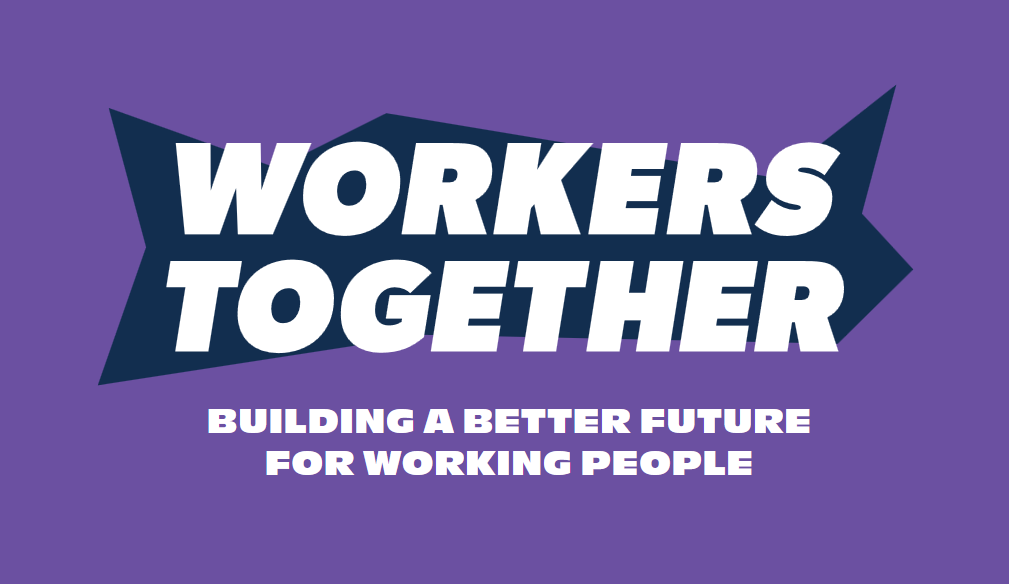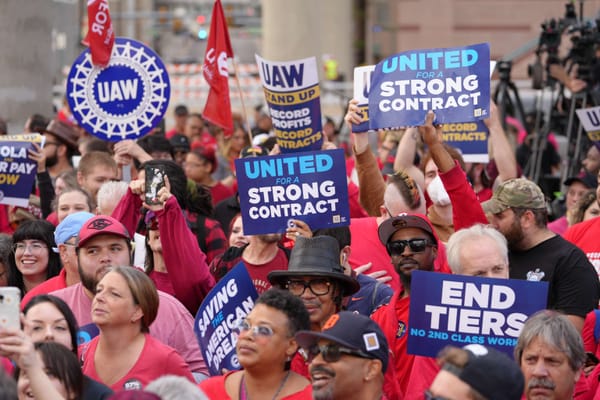
Following an eight-day strike by workers on the St. Lawrence Seaway, Unifor announced last Thursday that union members overwhelmingly ratified a new collective agreement with the employer, the St. Lawrence Seaway Management Corporation (SLSMC).
Union members across five Unifor locals spanning Quebec and Ontario walked off the job on October 22, shutting down cargo shipments throughout the seaway. The new deal secures annual wage increases of 5, 4 and 4 per cent.
“For the first time in 55 years seaway workers took the very hard decision to go on strike. They did so to fight for a more respectful workplace and for an agreement that reflects today’s economic times,” Lana Payne, Unifor national president, said in the union’s press release announcing the tentative agreement last week.
Although it was somewhat overshadowed by negotiations and brief job actions at the Big Three automakers, the seaway strike was nevertheless quite historic. October’s strike was the first on this commercially important trade route since 1968, and it immediately brought vast shipments of key grains, metals, and other materials to a standstill.
Additionally, as the second high-profile labour disruption on a critical piece of the Canadian supply chain this year, the strike was a further demonstration of workers’ discontent over the ongoing cost-of-living crisis and the refusal of employers and governments to take the crisis seriously. Following on the heels of strike action by British Columbia port workers, those on the St. Lawrence Seaway brought further attention to the challenges facing union members in global logistics industries.
More than 360 skilled workers represented by Unifor operate the seaway’s vital system of shipping infrastructure, which links trade routes in Canada and the United States connecting the Great Lakes to the Atlantic Ocean. The extensive canals, channels, locks and bridges between Montreal and Niagara that make up the St. Lawrence Seaway allow deep-water freighters to move billions of dollars of commodities every year.
By some estimates, roughly $34 million of goods move through the seaway every day. Industry associations, however, believe the cost of the strike to have been much higher, somewhere on the order of $110 million per day, when factoring in economic ripple effects in Canada and the U.S.
In other words, these were groups of workers with considerable systemic power strategically placed along a critical piece of infrastructure. Although the SLSMC is technically operated as a not-for-profit corporation, the power and profits of large swathes of the corporate sector depend on goods moving through the waterway.
As with so many labour actions over the past two years, workers demanded wage increases to keep up with inflation and the rising cost of living. The SLSMC, by contrast, characterized the union’s wage demands as seeking “increases patterned after the current automotive negotiations” and ostensibly out-of-step with their industry’s ability to pay.
Workers on the seaway had been without a contract since March 31, while the SLSMC refused to make meaningful movement on wages. In keeping with a trend seen across the country this year, workers rejected a tentative agreement presented to them by their union in July and later voted 99 per cent in favour of strike action.
Remaining vessels were cleared from the seaway during the required 72-hour strike notice period, but the work stoppage nevertheless idled more than 100 other ships waiting to enter the seaway. With every passing day of the dispute, business pressure to restart transport grew.
The employer had also applied to the federal government under the “maintenance of activities” provisions of the Canada Labour Code, a portion of the law that compels unions to provide some negotiated number of employees to continue reduced operations during a work stoppage.
In a familiar refrain, business organizations, such as the Canadian Chamber of Commerce and the Canadian Federation of Independent Business, pressed the federal government for back-to-work legislation and the use of federal power to end the strike. While business demands for strike-breaking legislation are nothing new, there has been a noticeable uptick in pressure to curtail the right to strike for various federally-regulated workers deemed ‘essential’ to the so-called ‘supply chain.’
For example, the federal Supply Chain Task Force, convened by the federal government in 2021, made a point of highlighting the threat posed by labour disruptions across the air, rail and water transportation routes in its final report. In the Task Force’s prescription, labour shortages and work stoppages necessitate government intervention to “modernize” labour relations (i.e., to prevent strikes) and to facilitate the efficient movement of goods.
The premiers of Ontario and Quebec also called on the federal government to intervene to end the seaway workers’ strike, offering yet another example of their disdain for workers’ rights and the collective bargaining process. In François Legault’s case, the Quebec premier is running headlong into a province-wide public sector strike after refusing to meet the wage demands of union members in the common front.
Federal Minister of Labour Seamus O’Regan and Minister of Transportation Pablo Rodriguez, clearly impatient with workers’ collective action, encouraged the parties to return to the table and negotiate. According to O’Regan’s Twitter account, the ministers’ “message was clear: get back to the table. Work together to reach a deal and get the seaway moving again.”As the CBC reported, the government “instructed” Unifor and SLSMC to negotiate with a federal mediator a few days after the strike began.
Again on October 26, O’Regan tweeted, “Heading out to Toronto tonight. St. Lawrence Seaway Management Corp. and Unifor are back at the table tomorrow. That’s where we need them, at the table. That’s where the deal gets done. And we need them to get a deal.”
The phrasing of O’Regan’s interventions throughout the dispute was notable. The minister repeatedly emphasized the need to ‘get back to the table,’ where “deals get done.” Insofar as his tone indicated a reluctance to use more coercive measures, such as back-to-work legislation, we may consider it a positive development.
However, there was a sense in which bargaining at “the table” was invoked as a substitute for the right to strike, rather than bargaining and striking being intimately connected. In many cases, there is no point in returning to the bargaining table if the balance of power hasn’t been shifted from the picket line.
It’s also worth recalling that the labour minister and his government had no qualms about leaning heavily on striking B.C. port workers this past July — or with the Canada Industrial Relations Boards’ questionable ruling that effectively ended that strike.
The federal Liberals continue to delicately thread the needle between appearing to respect workers’ rights while responding to the business interests they truly represent.
That the union and employer ultimately reached a deal through mediation is certainly preferable to any outright legislative intervention. However, labour will need to remain on guard against business and governments deploying the language of ‘essentiality’ to call for infringements on the right to strike.
Striking Unifor members, following their brothers and sisters with the International Longshore and Warehouse Union in B.C., showed that workers occupying essential parts of the supply chain can use their collective power to strike and win.
These workers demonstrated the power that comes with being “essential.”
Recent Class Struggle Issues
- October 30 | Canadian Labour Is Lining Up In Support Of Palestinians
- October 23 | Fred Hahn Deserves Our Full Support Against Pro-Israeli Smears
- October 16 | Who Did It Better, United Auto Workers Or Unifor?
- October 6 | An Entire Workforce Was Fired In The Midst Of Union Organizing







